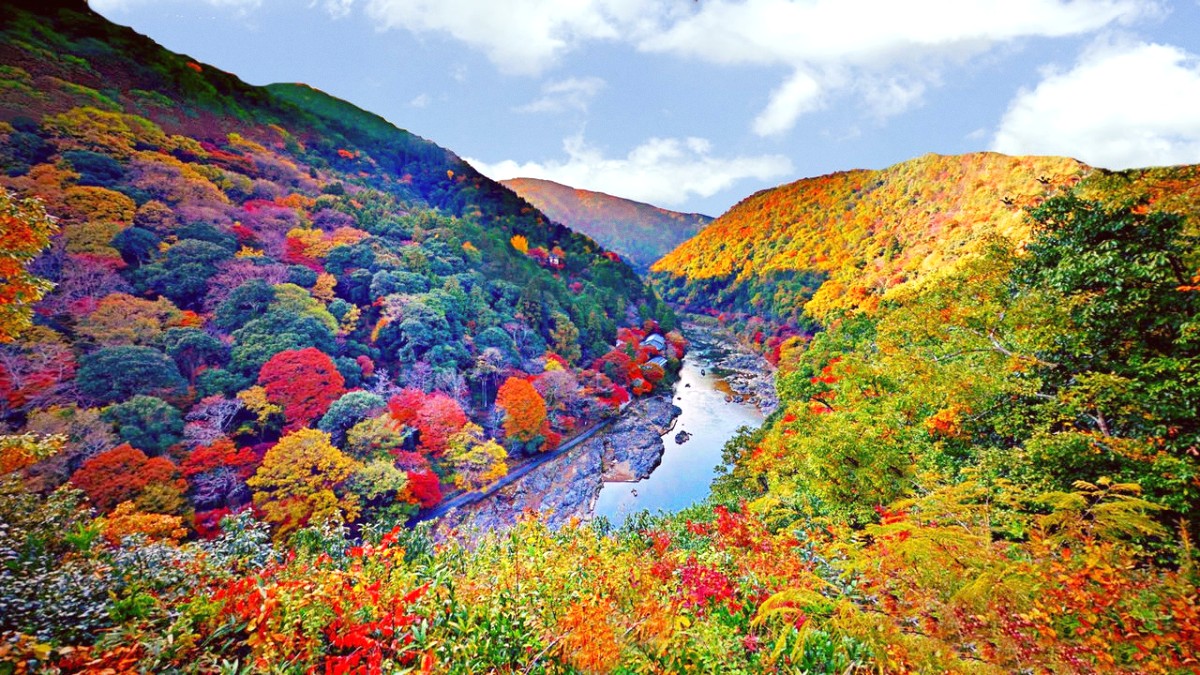
Kyoto, Japan
The Hozugawa River, also known as the Oi River, flows from the mountains, passing under the Togetsukyo Bridge before its journey. The district's layout spreads along the riverbanks and into the lower mountain slopes, with temples and pathways nestled among the trees.
The elevation here is modest, meaning most attractions are accessible on foot, though some temples demand short uphill walks.
Arashiyama is popular. Early morning visits avoid the largest crowds. A half to full day allows a good visit, but more time allows exploration and activities like the boat ride.
Arashiyama’s history is rich, dating back to the Heian Period (794-1185), when Japanese emperors and nobility built villas and temples here, drawn by its natural beauty. It became a favored retreat from the imperial capital of Kyoto.
Many of Arashiyama’s most famous sites hold centuries of history. Tenryu-ji Temple, an UNESCO World Heritage site, is a premier example of Zen Buddhist architecture and garden design. Its foundation dates to the 14th century, built by the shogun Ashikaga Takauji.
Its foundation dates to the 14th century, built by the shogun Ashikaga Takauji.
The Togetsukyo Bridge, while rebuilt over time, has spanned the river for centuries, observing countless seasons and events.
Its name, "Moon Crossing Bridge," comes from Emperor Kameyama, who remarked that the moon appeared to cross the bridge.
Poets and artists have long found inspiration in Arashiyama’s landscapes, weaving its bamboo, mountains, and river into their works.
This artistic legacy cements Arashiyama’s place as a beautiful spot and a location with deep cultural resonance. Visiting Arashiyama means stepping into a landscape admired and preserved for generations.
Arashiyama’s landscape mirrors Japan's deep connection to its past and natural surroundings. The area’s position means it benefits from fresh air and cooler temperatures compared to Kyoto’s more urban core during warmer months, while still feeling connected to the city.
Arashiyama is accessible by JR train, Randen tram, and Hankyu train from central Kyoto.
A half to full day allows a good visit, but more time is available for exploration and activities like the boat ride.
Arashiyama’s blend of natural beauty, historical depth, and diverse activities crafts a compelling destination. It is a distinct flavor of Kyoto, inviting visitors to slow down and appreciate a landscape admired for centuries.
Arashiyama presents a varied experience for visitors.
It encompasses natural wonders, spiritual sites, and cultural activities.
A towering forest of bamboo stalks, creating an unique atmosphere.
A UNESCO World Heritage site with a Zen garden.
A historic bridge over the Hozugawa River with scenic mountain views.